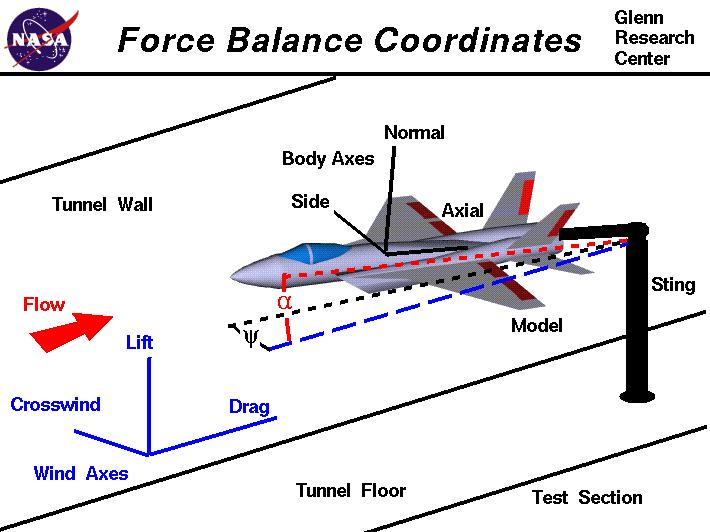Coefficients must be defined per axis; for Electron, I specified DRAG (axial) and LIFT (pitch/normal) axes.
Normally, I would also need to define the SIDE (yaw) axis, but due to symmetry about the longitudinal axis, SIDE is simply equal to -LIFT.
DRAG force is a factor of the following:
- Dynamic pressure (JSBSim property: aero/qbar-psf): pressure of air exerted on moving rocket; increases with speed
- Cross-sectional area (JSBSim property: metrics/Sw-sqft): for a cylindrical rocket, equal to the circular cross sectional area
- Angle of attack alpha (JSBSim property: aero/alpha-rad): angle between wind and rocket, related to pitch angle
- Mach number (JSBSim property: velocities/mach)
RASAero was able to plot the drag coefficient CD versus alpha at Mach 0.1, 0.5, 1.1, 2.0, 5.0.
It was also able to plot CD versus Mach number from 0 to 25.
I defined tableData elements in JSBSim for these two plots. The first plot has two independent variables alpha and Mach number so the table is two-dimensional with alpha increasing from top to bottom, and Mach number increasing from left to right.
The second table is just CD with Mach number increasing from top to bottom. I took the "power-on" sim values (exhaust plume effects included) as the rocket will likely be thrusting through most of its flight path.
LIFT force, like DRAG, is also a factor of dynamic pressure, cross-sectional area, angle of attack, and Mach number.
I defined another two-dimensional table with independent variables alpha and Mach number from a RASAero plot of lift coefficient CL.
Next I will define the GNC parameters for stabilizing the rocket during flight.



No comments:
Post a Comment